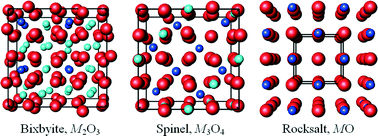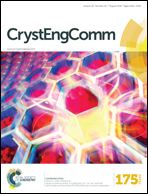In situ neutron powder diffraction study of the reaction M2O3 ↔ M3O4 ↔ MO, M = (Fe0.2Mn0.8): implications for chemical looping with oxygen uncoupling
Abstract
The structural properties of (Fe0.2Mn0.8)xOy as a function of temperature under differing oxidizing and reducing atmospheres have been investigated using Thermal Gravimetric Analysis and neutron powder diffraction techniques. The principal observation is a reversible transition between the (low temperature) bixbyite and (high temperature) cubic spinel structured phases, which occurs over a significant temperature range and is dependent on the surrounding gas atmosphere. In addition to detailed information concerning the temperature dependence of the positional parameters, analysis of the powder neutron diffraction data shows that the two metal species are not completely randomly distributed over the two symmetry independent cation sites within the bixbyite and cubic spinel phases. More significantly, the two phases appear to be completely stoichiometric, with compositions (Fe0.2Mn0.8)2O3 and (Fe0.2Mn0.8)3O4, respectively. Under severely reducing conditions, the sample transforms to a rocksalt structured phase of stoichiometry (Fe0.2Mn0.8)O, but reverts to the spinel and bixbyite phases on re-oxidation. The implications of these findings for the use of (Fe1−xMnx)Oy as oxygen carriers in chemical looping combustion (CLC) and chemical looping with oxygen uncoupling (CLOU) techniques to capture CO2 during combustion of hydrocarbon fuels is briefly discussed.


 Please wait while we load your content...
Please wait while we load your content...